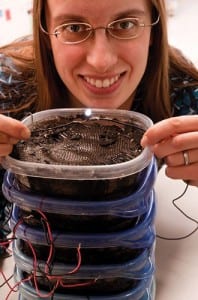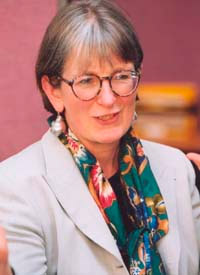By: Sheila Moorcroft
Clean water and clean power, especially in remote areas of Africa and other developing nations, are critical challenges. One piece of technology, Microbial Fuel Cells, (MFCs) could help address both problems, and bring the additional benefits of mobile communications – changing the lives of millions. In one incarnation, it might also reduce the scourge of malaria.
What is changing?
MFCs have been under development for several years. They draw on the power of bacteria and a growing range of ‘feedstocks’ – sewage, pig manure, urine, cow rumen, brackish water, and more recently actual insects – to generate electricity with little or no external power input, once the process is underway.
The technology is sophisticated and still evolving but draws on the wide ranging appetites of bacteria. As described by Janelle Curtis, of the Biodesign Institute at Arizona State University, “Bacteria have evolved to utilize almost any chemical as a food source. In the microbial fuel cell, bacteria form a biofilm, a living community that is attached to the electrode by a sticky sugar and protein coated biofilm matrix. When grown without oxygen, the byproducts of bacterial metabolism of waste include carbon dioxide, electrons and hydrogen ions. Electrons produced by the bacteria are shuttled onto the electrode by the biofilm matrix, creating a thriving ecosystem called the biofilm anode and generating electricity.”
Why is this important?
Bringing power and fresh water to remote areas of Africa and other developing nations remains a huge challenge. MFC technology could provide a significant contribution to the solution. In addition, it could result in cost effective and more environmentally friendly method of desalination. Using animal effluent could result not only in clean water supplies as well as power, but also help to reduce the Green House Gas outputs of livestock.
MFC technology is also being targeted on mobile communications. Among the 500 million or so Sub Saharan Africans that do not have access to power, 22% already have a mobile phone, but cannot easily charge it. MFC technology is central to developing a robust, cheap, and easy to assemble phone charger which could ‘run on dirt’. The recent demonstration of a clock that runs on flies which it ‘digests’ could also be adapted to support phone chargers or lighting. It would have the added benefit of potentially feeding on mosquitoes, or other disease carrying insects, thus reducing the scourge of malaria which kills over 2.5 million people each year, mainly in Sub Saharan Africa.
MFCs could soon give a triple bang for the bug!

New Explorations grantee Erez Lieberman-Aiden and a team at Harvard University in the U.S. are developing a low-cost microbial fuel cell that recharges using free electrons found in soil bacteria.
By Sheila Moorcroft
About the author
 Sheila has over 20 years experience helping clients capitalise on change – identifying changes in their business environment, assessing the implications and responding effectively to them. As Research Director at Shaping Tomorrow she has completed many futures projects on topics as diverse as health care, telecommunications, innovation management, and premium products for clients in the public and private sectors. Sheila also writes a weekly Trend Alert to highlight changes that might affect a wide range of organisations. www.ShapingTomorrow.com
Sheila has over 20 years experience helping clients capitalise on change – identifying changes in their business environment, assessing the implications and responding effectively to them. As Research Director at Shaping Tomorrow she has completed many futures projects on topics as diverse as health care, telecommunications, innovation management, and premium products for clients in the public and private sectors. Sheila also writes a weekly Trend Alert to highlight changes that might affect a wide range of organisations. www.ShapingTomorrow.com
